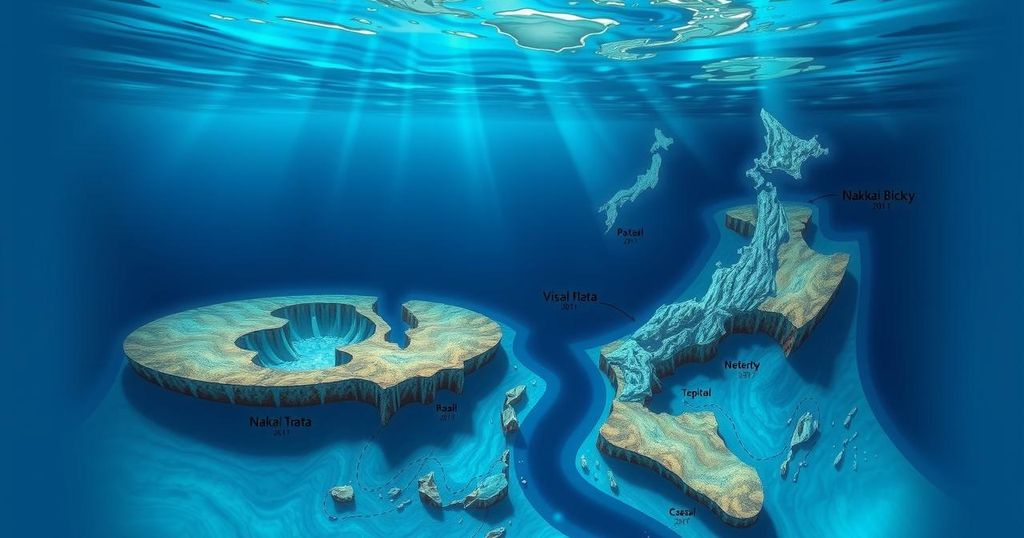Japan’s Megaquake Forecast: A Dire Warning from the Nankai Trough

Japan is preparing for a catastrophic “megaquake” forecasted to cause up to 298,000 deaths and $2 trillion in damages. The Nankai Trough, an undersea fault with high seismic risk, has a significant probability of producing a major earthquake within the next 30 years, prompting urgent government advisories for disaster preparedness.
Japan faces a grave threat from its “megaquake” forecast, with potential casualties reaching up to 298,000 and damages estimated at $2 trillion, according to government estimates. This warning follows a recent magnitude 7.1 earthquake in southern Japan that injured 14 individuals in 2024. Up to 1.23 million people, approximately 10% of Japan’s population, may be evacuated if the predicted megaquake occurs.
The first advisory regarding the Nankai Trough was issued in August 2024. This undersea fault extends 900 kilometers from Shizuoka to Kyushu. The government implemented megaquake preparedness protocols following the catastrophic events of 2011, which included an earthquake, tsunami, and nuclear disaster.
The Nankai Trough is particularly concerning due to its tectonic activity, where the Philippine Sea Plate subducts beneath the Eurasian Plate. This process can release energy capable of generating earthquakes with magnitudes up to 9.1. Current estimates indicate a 70-80% chance of a magnitude 8–9 quake occurring within the next 30 years.
Historical data reveals that megaquakes in this region occur every 100–200 years, with the last major quake recorded in 1946. A significant rupture could cause tsunamis that may reach heights of 30-34 meters within minutes, heavily impacting coastal areas such as Shizuoka, Kochi, and Wakayama.
Tokyo’s revised forecasts predict 215,000 tsunami-related deaths, 73,000 fatalities from building collapses, and 9,000 due to fires, down from earlier projections of 323,000 deaths in 2014. The persistent strain on the Nankai Trough increases the risk of sequential megaquakes over time.
Research conducted by Tohoku and Kyoto Universities indicates that a quake with a magnitude of 7 or higher significantly heightens the risk of subsequent quakes occurring within a week, with probabilities 100–3,600 times higher than baseline.
The Nankai Trough, spanning 800 kilometers from Shizuoka to southern Kyushu, is a critical area of concern as it experiences the subduction of the Philippine Sea Plate under Japan’s continental crust, leading to energy accumulation that can result in devastating earthquakes.
Japan bears the scars from the 2011 Tōhoku earthquake, which resulted in 18,000 fatalities and initiated the Fukushima disaster, reinforcing the urgency for preparedness. According to University of Tokyo seismologist Naoshi Hirata, “The time for preparedness is now—not when the ground begins to shake.”
Japan’s impending risk from potential megaquakes, particularly along the Nankai Trough, necessitates urgent preparedness measures. With staggering projections of casualties and financial losses, understanding tectonic dynamics is essential. Historical recurrence of major earthquakes and their devastating impacts highlight the urgency for early warning systems and disaster readiness, especially given Japan’s traumatic experience with past earthquakes.
Original Source: www.livemint.com







